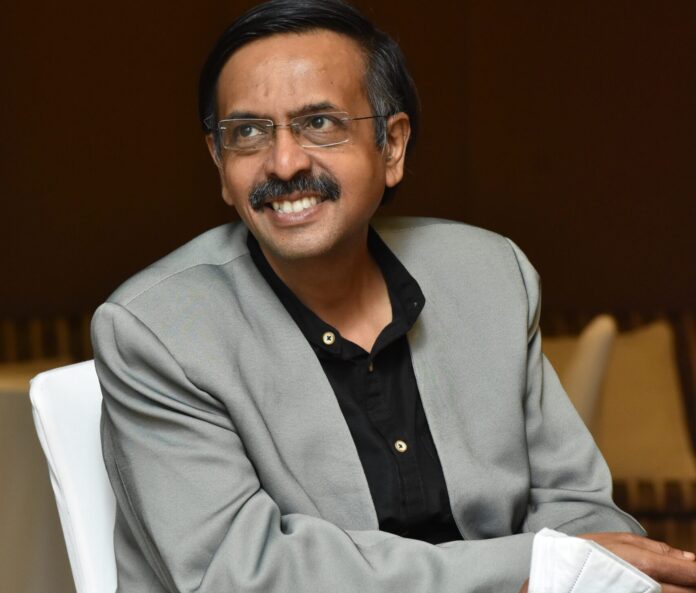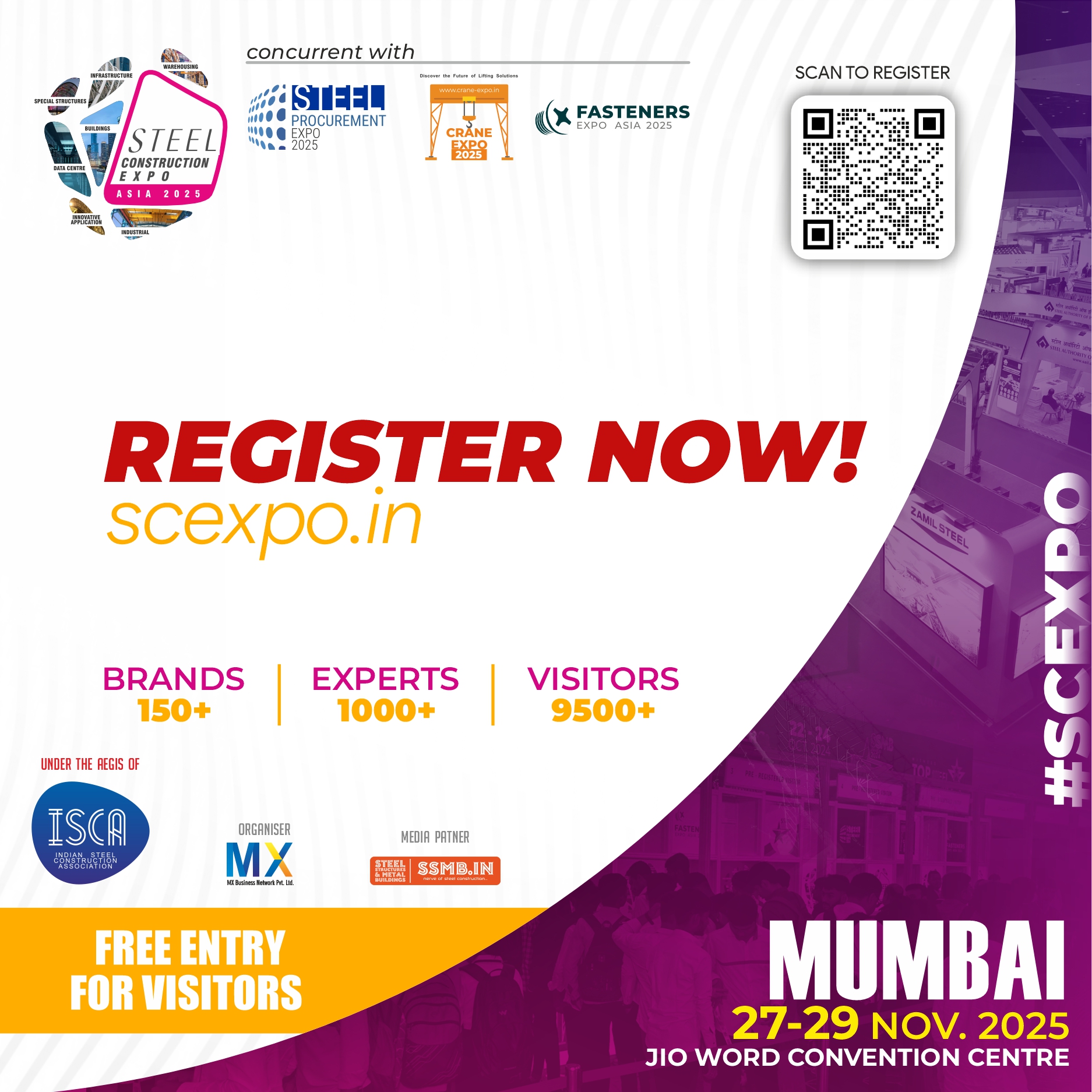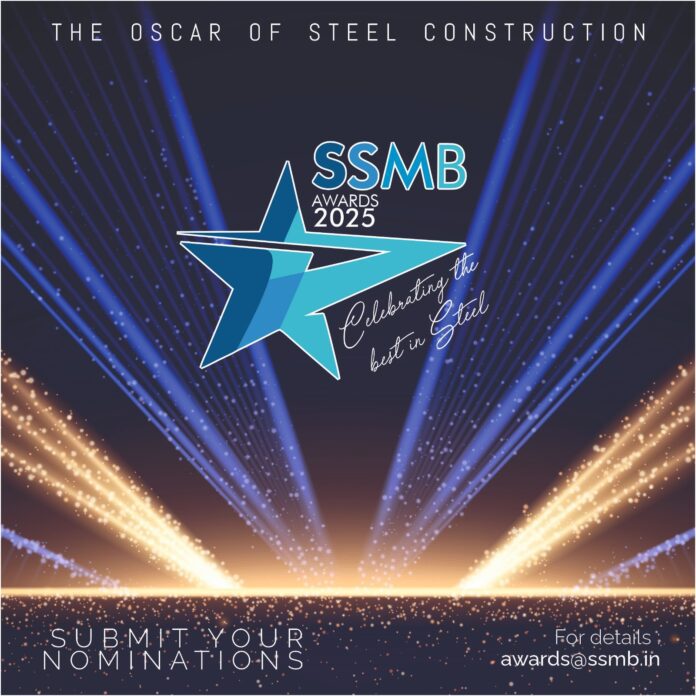Intro:
With over three decades of pioneering experience, NIKHIL SHANGHVI, Managing Director of SACPL, stands at the confluence of engineering vision and technological foresight. Under his leadership, SACPL has evolved from a traditional structural consulting firm into a digital-first engineering powerhouse leveraging BIM, AI, and computational design to deliver landmark projects across India and beyond.
Talking about life’s engineering saga, he reflects on SACPL’s philosophy of evolution, the growing role of steel and hybrid systems in India’s infrastructure landscape, and the importance of adaptability for the next generation of engineers.
“Evolution is intrinsic to excellence. We see change not as disruption, but as an opportunity to improve, adapt, and stay ahead. Hence SACPL is a land of opportunity for all stake holders.”
— Nikhil Shanghvi, Managing Director, SACPL
ENGINEER’S SNAPSHOT
College: Sardar Patel College of Engineering, Mumbai
Experience: 29 years
Biggest Influences or Mentors:
Er. Suresh Shanghvi (my father)
Er. Abhay Ghate
Er. Girish Dravid
Mantra for Success: Speed of execution prevails
Would Like to Be Remembered As: Opportunity Creator & Team Builder
Current Steel Projects: Go-Olympic Stadiums, Ahmedabad; Premium Residential Project, Khar
As Managing Director of SACPL, how would you describe the company’s core philosophy and evolution over the years?
SACPL has always been a place of opportunity and innovation. Our growth has never been just about scale, it has been about evolving how we think, design, and deliver. Nearly 15 years ago, when mobile apps for inspections were not yet common, we had already begun digitising our inspection and quality-monitoring processes. That early embrace of technology set the tone for who we are today.
Now, we are taking that spirit further by exploring generative AI and advanced computational tools to optimise our engineering solutions. For us, evolution is intrinsic to excellence, we see change not as disruption, but as an opportunity to improve, adapt, and stay ahead. This mindset has allowed SACPL to continuously push boundaries and remain at the forefront of structural innovation in India’s fast-transforming infrastructure landscape.
What types of projects do you see as most promising for growth in structural consulting today?
Government-funded projects are currently driving some of the most exciting opportunities in structural consulting. We are seeing significant momentum in data centres, stadiums, and sports infrastructure, sectors that demand precision engineering, long-span design, and adaptability for future use. At the same time, commercial construction continues to be a vital growth area, especially with the rise of flexible, tech-enabled workspaces and mixed-use developments. Over the next two to three years, our focus is to deepen our expertise across these segments, leveraging advanced technologies and collaborative design processes to deliver projects that are not only efficient but also resilient and future-ready.
SACPL has been involved in a wide range of infrastructure and industrial projects. How has the use of steel influenced your structural design strategies in recent years?
Structural steel has become indispensable in executing large-scale, complex, and time-sensitive projects. Its versatility allows us to achieve longer spans, lighter structures, and faster execution without compromising safety or durability. A notable example is the World Trade Center project, where initial guidelines leaned toward concrete. After detailed analysis, we successfully convinced the client to adopt a hybrid steel–concrete solution, which ultimately delivered superior performance, faster construction, and greater efficiency for both the contractors and end users.
While there is still some hesitation toward steel in India, once stakeholders experience its flexibility, speed, and lifecycle benefits, perceptions shift rapidly. The real turning point comes when clients see how well steel adapts to their functional and architectural needs, that is when it stops being an option and becomes the obvious choice.
Are you seeing wider acceptance of steel structures in commercial, institutional, or industrial buildings among your clients?
Absolutely. The shift in mindset over the past decade has been remarkable. Ten years ago, very few clients considered steel as a serious option. Today, they actively explore it, comparing costs, timelines, and performance before making decisions. This growing curiosity and openness reflect a broader recognition of steel’s advantages in speed, flexibility, and durability.
At present, there are still capacity constraints in fabrication and skilled erection, which add a slight premium to steel construction. But as the ecosystem matures, with more fabricators, trained professionals, and streamlined supply chains, these costs will stabilise. We are confident that steel structures will soon become not just viable, but the preferred choice across commercial, institutional, and industrial projects.
Can you share a few standout projects where steel was a gamechanger in terms of design, execution, or architectural impact?
Two projects stand out where steel truly changed the game.
The first was a restaurant commissioned by the PMO, featuring a 15 m cantilever at the boundary and a structure rising 29 m above floor level. Building this entirely in concrete was technically possible but highly impractical. We offered the client three options — full concrete, hybrid steel-concrete, and pure steel. The hybrid solution proved the most efficient: the architect achieved the desired form, the contractor completed the work within schedule, and the client saved significantly on cost and scaffolding time. Steel made what seemed challenging both, feasible and elegant.
The second was the Kalinga Stadium project in Odisha, including the Aquatic Centre and High-Performance Centre. These facilities demanded long spans and open spaces, conditions where steel performs best. Although the client initially leaned toward concrete, our team demonstrated that steel offered faster execution and greater architectural flexibility. Once adopted, it validated every expectation.
To me, some projects are naturally born for steel, and it is the structural engineer’s role to recognise those opportunities early, to present options transparently, explain trade-offs clearly, and guide clients toward choices that align performance, practicality, and vision.
In your experience, what are the common challenges in steel structure design, and how do you address them?
I would not classify the challenges in steel structure design as purely technical, as most stem from practical execution and coordination. One recurring issue is the availability and allocation of steel for connections. Once the connection design is finalised, ensuring timely fabrication and sufficient resources becomes critical. On site, deviations from design intent such as location mismatches, sequencing delays, or unanticipated field constraints can create disruptions that demand quick, informed decisions.
That said, there is no engineering problem that can’t be solved with the right skills and the right team. The key is agility, being able to adapt fast while maintaining precision. Today, with AI-driven modelling, advanced computational analysis, and digital fabrication tools, we are able to streamline workflows, anticipate potential bottlenecks, and optimise design-to-execution processes. These technologies not only improve accuracy but also elevate the overall efficiency and reliability of steel construction.
How is SACPL leveraging technologies like BIM, parametric modelling, and AI tools in its engineering processes?
At SACPL, technology has become the backbone of our engineering workflow. BIM is now an integral part of how we plan, coordinate, and execute projects as it ensures clarity across disciplines and helps us detect design conflicts early, saving both time and resources. We are also integrating parametric modelling, particularly for projects that involve complex geometries or non-linear forms. For instance, in one of our projects in Bangladesh, the Sheikh Hasina Stadium, we used parametric tools to model intricate design patterns and structurally optimise them well before fabrication.
Additionally, AI-driven tools are starting to influence how we approach design optimisation and material efficiency. By analysing multiple design permutations, these tools help us identify the most effective and sustainable structural solutions. Collectively, these technologies are transforming our processes, making our engineering smarter, faster, and more precise.
What measures does SACPL implement to ensure safety, code compliance, and quality in steel-intensive projects?
At SACPL, code compliance and safety are absolutely non-negotiable. Every project we deliver is rooted in the principle that structural integrity cannot be compromised under any circumstance. To uphold this, we have a dedicated in-house quality and safety team that continuously monitors design, fabrication, and execution stages to ensure full alignment with national and international codes.
We also leverage digital tools to automate and streamline quality checks, ensuring that evolving standards and safety benchmarks are consistently met. In many cases, we refer global best practices and international standards to supplement local codes, especially in areas where more advanced guidance exists.
Do you see hybrid structural systems combining steel and concrete as the future of large-scale construction?
Absolutely. Hybrid structural systems are not just the future, they are a necessity for large-scale, high-performance construction. With India’s ambitious infrastructure expansion and rapid urbanisation, it’s increasingly clear that no single material can address every structural demand.
It is never about being pro-steel or pro-concrete, but it is about being pro-solution. The role of a structural engineer is to identify the right combination that optimises performance, economy, and constructability for each unique project. While hybrid systems may require a slightly higher initial investment, their long-term benefits like durability, safety, and lifecycle efficiency far outweigh the cost. Educating clients about these advantages and helping them visualise the long-term value is a crucial part of that transition.
What is your perspective on India’s readiness to scale up steel usage in infrastructure, and what more needs to be done?
India is undoubtedly on the cusp of a major transformation in steel-intensive infrastructure, but scaling up effectively will require a holistic strengthening of the entire value chain. From design and engineering capacity to fabrication, manufacturing, mining, and logistics, every link must evolve in sync to handle the rising demand.
The momentum is already here, driven by ambitious government programs and private sector investments, but to sustain it, we need strategic guidance and coordinated action. Encouraging more players to build capability, investing in skill development, and promoting faster approvals for fabrication and supply networks will be crucial.
How can structural consultants and contractors collaborate more effectively to streamline steel construction and control costs?
I firmly believe that the EPC model represents the future of efficient project delivery. Many of our most successful steel projects have thrived on close collaboration between consultants and experienced contractors. When both sides share a unified vision, execution becomes significantly smoother and more efficient.
In fact, having a structural engineer embedded within the contractor’s team can simplify nearly half the challenges upfront. It bridges design and execution seamlessly while still maintaining transparency through client reviews and checks. This collaborative structure not only accelerates timelines but also improves coordination, quality control, and cost efficiency.
What qualities do you look for in the next generation of structural engineers joining SACPL?
I often say this, SACPL is the land of opportunities. I am truly fortunate to have a team that takes immense pride in stepping beyond their comfort zones and embracing new challenges. When I look at the next generation of structural engineers, I value adaptability, curiosity, and a constant desire to learn above all else. In today’s world, where AI and digital tools have made knowledge instantly accessible, the differentiator is not how much one knows, but how effectively one can apply that knowledge in real-world situations.
Concepts that once took years to master can now be understood in months, but this advantage only matters if young engineers remain agile and open-minded. The future belongs to those who combine technical competence with practical understanding, continuously evolving their skills to meet the pace of change in design, materials, and construction technology.
Editor’s Note:
In a sector where technology is evolving faster than ever, leaders like Nikhil Shanghvi are proving that adaptability, curiosity, and data-driven design are not just ideals but imperatives. SACPL’s journey from early digital adoption to today’s AI-led engineering mirrors the transformation India’s steel construction industry itself is undergoing. The future, as Shanghvi reminds us, will belong to those who see integration of people, materials, and technology as the new definition of structural excellence.
When Steel Redefined a Challenge
One of SACPL’s most memorable achievements was a PMO-commissioned restaurant that demanded a daring 15-m cantilever. Conventional concrete methods made the structure nearly impossible until the SACPL team proposed a hybrid steel-concrete solution.
The result? A technically elegant, cost-efficient structure completed within schedule. It was a masterclass in collaboration, innovation, and material intelligence.




